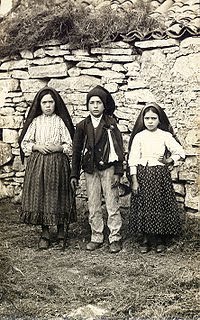
In all, 13,123 men and women were dispensed formally from their vows in religious life, a requirement for returning to the lay state, between 2008 and 2012. The annual average is 2,624.6.
The Secretary of the Congregation for Institutes of Consecrated Life, Archbishop José Rodríguez Carballo, cited “emotional problems” including “falling in love” in heterosexual relationships which sometimes “culminate in marriage.” But he also noted the “violation of the vow of chastity,” including with “repeated acts of homosexuality – more evident in men, but equally present, more than you think, among women.”
Many religious, he said, suffer a “loss of sense of belonging to the Church,” and this “lack of true communion...is manifested, among other things, in not sharing the Church’s teaching on specific issues such as the ordination of women and sexual morality.”
At a meeting in Rome late last month, Archbishop Rodríguez, lamented, “In a world where everything is soft, there is no place for sacrifice, nor by renunciation, or other similar values.”
The “absence of a spiritual life” – meaning “personal prayer, community prayer and sacramental life” and the “loss of sense of belonging to the community” – leads ultimately “to a profound crisis of faith,” he added.
The numbers, said Archbishop Rodríguez, indicated a possible change in the Church’s Canon Law saying that the law as it is “does not allow us to have longer novitiates in order to permit better discernment.” Nevertheless,” he said, “it’s appropriate to say that it is almost impossible to accurately detect these root causes,” due to a lack of “fully reliable data.”
Further, most people in Western countries come from a culture that precludes long-term commitment, one the archbishop compared to “zapping” from one television channel to another. “The first thing obvious to all is that we are in a world in profound transformation,” he said.
Following the close of the Second Vatican Council, one of the most notable, and alarming, features of the Catholic landscape was the mass “exodus” of thousands of consecrated religious, who left their orders, at the same time that religious orders started “experimentally” abandoning their habits and traditional practices like life in common and daily, scheduled prayer times.
In his October 29 address, however, Archbishop Rodríguez did not mention the growth of a movement within the religious life to push against the trends, and retain their customs and traditions. Dozens of small communities have either been founded or reformed in the last 20 years to bring back, in accordance with the instructions of the Second Vatican Council, those aspects of religious life – most prominently deliberate adherence to the Church’s moral teachings – that were lost or abandoned.
In a decision seen by many as a powerful symbol, in 1993 the Poor Clares of Perpetual Adoration, made famous as the community of ETWN founder Mother Angelica, moved from a modified, short-skirted habit, to the enveloping outfit that had been traditionally associated with sisters before Vatican II.
Another world-famous, and instantly recognizable, community are the Missionaries of Charity, founded by Mother Theresa of Calcutta whose strict regimen of asceticism and care for the “poorest of the poor” around the world – including lepers – has never dampened the enthusiasm of the hundreds of women who apply around the world.
One of the most prominent and well known of these groups are the Dominican Sisters of Mary, Mother of the Eucharist, a teaching order founded in 1997, who have been featured as “young and rapidly expanding” on Oprah and dozens of other television and print news outlets in the U.S. These sisters have announced that, having outgrown their recently completed motherhouse in Ann Arbor, Michigan, they will be opening two new houses of formation in Texas and California.
The sisters are part of an umbrella organization for female religious, the Council of Major Superiors of Women Religious, (CMSWR) that was formed as an answer to the extreme liberalization of the older group, the Leadership Conference of Women Religious (LCWR), that is currently under doctrinal investigation by the Vatican’s Congregation for the Doctrine of the Faith.
In opposition to LCWR organisations, CMSWR groups have as their basic principle their loyalty to Catholic doctrine and the Vatican’s authority and to the ancient traditions of the religious life. All of the groups wear some form of recognizable religious habit, live the traditional common life and engage in works that have always been associated with Catholic sisters such as teaching, nursing and prayer. They are also attracting large numbers of young women.
Sister Thomas Augustine, director of California Mission Advancement for the Ann Arbor Dominicans recently told Catholic San Francisco magazine, “We had 22 young women enter in August, and we have had between 10 and 20 new vocations per year for the past five years.”
“It has happened to us before that by the time we finished adding onto the motherhouse in Ann Arbor we were already out of room! This time we are hoping to stay ahead of things so we are planning for two new houses of formation.”










No comments:
Post a Comment